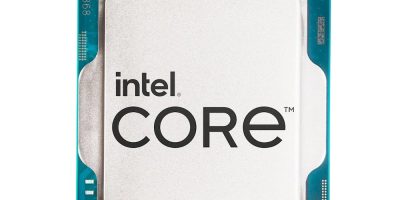Intel introduces socketed SoCs for edge and AI
12th gen Intel Core SoC processors have been announced. Intel announced the line-up of purpose built edge processors which can be used to enhance graphics, AI for the IoT edge.
According to Intel, the purpose-built edge SoC processors mark an industry first: a socketed SoC for high performance integrated graphics and media processing for visual compute workloads. They have a compact footprint and a wide operating thermal design power (TDP) for small form factor, fanless designs.
The SoC has been developed in response to the increased volume of data created at the edge which needs to be processed and analysed. Digital transformation at the edge requires increased processing power and AI inference performance to future-proof AI workloads, said the company. These 12th gen Intel Core SoC processors for IoT edge feature manageability capabilities including Intel vPro options for remote control and manageability which is required for managing and servicing systems deployed at the IoT edge.
The 12th gen Intel Core SoC processors deliver up to four times faster graphics, as measured by 3DMark, the benchmarking tool, and up to 6.6 times faster GPU image classification inference performance compared with 10th gen Intel Core desktop processors in a 12 to 65W design.
The 12th gen Intel Core SoC processors for IOT edge include Intel Thread Director, which intelligently directs the operating system to assign the right workload to the right core. With up to 14 cores and 20 threads, the SoC processors also reach up to 1.32 times faster single-thread performance and up to 1.27 times faster multi-thread performance compared with 10th Gen Intel Core desktop processors, said Intel.
The SoC processors also support AI for inferencing and machine vision, with up to 96 graphics execution units for a high degree of parallelisation in AI workloads. AI acceleration on the CPU via Intel Deep Learning Boost provides additional inferencing. The processors also support Intel Distribution of OpenVINO toolkit optimisations and cross-architecture inferencing. The integrated graphics, enhanced visual compute, and AI capabilities may realise imaging and pattern recognition for healthcare or create new opportunities for point of sale retail, said Jeni Panhorst, vice president Data Platforms and general manager of the Network & Edge Platforms division.
Other market sectors likely to expand remote control and manageability of systems at the edge include banking, hospitality and education to respond to changing supply and demand. For industrial manufacturing, they can enhance industrial PCs, edge servers, advanced controllers, machine vision systems and virtualised control platforms, while in healthcare the processors can deliver enhanced ultrasound imaging, medical carts, endoscopy and clinical devices at the edge.




